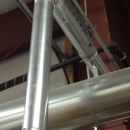
Clothes Dryer Fire Prevention
The U.S. Consumer Product Safety Commission (CPSC) states that clothes dryers account for over 15,000 fires annually. Fires can materialize when lint accumulates in the dryer or in the exhaust duct. Dryer lint can hinder the flow of air causing extreme heat conditions resulting in a fire.
According to data compiled by the U.S. Fire Administration, lack of maintenance is the main contributing factor to dryer fires, Dryer vents congested by lint may cause elevated temperatures sufficient to kindle the lint or nearby combustibles. By practicing these simple safety tips the possibility of having a dryer fire caused can be largely decreased.
CPSC Recommended Tips:
Inspect and discard lint from the screen/filter before or after drying each load
Indications that the lint screen or exhaust may be obstructed include drying times that are longer than normal and if the clothes are still damp at the end of a typical drying cycle.
Clean the dryer vent and exhaust duct annually
While the dryer is in operation check the outside dryer vent to make sure exhaust air is escaping. If it is not, the vent or the exhaust duct may be blocked. It is advised to disconnect the exhaust duct to remove a blockage. Remember to reconnect the ducting before using the dryer again. The Chimney Safety Institute of America recommends at least annual inspection by a qualified technician. The purpose of the inspection is to make sure the dryer is properly vented and that there are no obstructions such as lint and even nesting animals.
Clean behind the dryer, where lint can build up
Have a certified service technician clean the interior of the dryer chassis annually to minimize the amount of lint accumulation.
Keep the area around the dryer clean and free of clutter
Combustibles such as clothing, boxes and other items should not be placed near or around the dryer. It is suggested that the dryer should have three feet of space clear of combustibles. Laundry areas should be kept clean and clutter-free.
Gas-powered dryers must be properly vented to help avoid a build-up of deadly carbon monoxide
The Federal Emergency Management Agency (FEMA) has recommended gas lines and connections to be inspected on an annual basis.
Exterior wall dampers should have a covering that will keep out rain, snow and dirt
It is not recommended to use wire screens or clothing to protect the covering. It is possible that by doing so it will lead to lint build up in other areas of the ventilation. Make sure the dryer vent system and damper are working to deter birds and other small animals from nesting in the vents.
Special care is advised for drying clothing that is soiled with volatile chemicals such as cooking oils, cleaning chemicals, gasoline or finishing oils and stains
If possible, it is advised to wash the clothing more than once to minimize the amount of volatile chemicals on the clothes and hang dry. If not possible, put the dryer on the lowest heat setting and drying cycle should be set to a period of cooling down at the end of the cycle. To avoid igniting a fire, do not leave dried clothing in the dryer or piled in a laundry basket after the cycle has ended.
Soil-Away Cleaning & Restoration specializes in fire, smoke and flood damage cleanup for south/central New Hampshire (NH) and northern Massachusetts (MA). We are a 24/7 emergency service company that helps families and businesses recover from property disaster. We work will all national and local insurance companies for damage claims. Contact the fire and water restoration experts at Soil-Away today for fast, professional service -603-641-6555.

